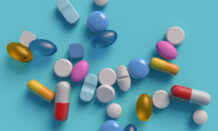Nearly three-quarters of drugs advertised on television provide little benefit, according to a study in JAMA Network Open in January. Researchers at Brigham and Women’s Hospital and Harvard Medical School obtained a list of the 81 top-advertised drugs in the U.S. from a database spanning from 2015 to 2021 and then evaluated the therapeutic claims made for each one using ratings from independent health technology assessment agencies in France, Germany, and Canada. The ratings included such factors as the drug’s benefits, strength of evidence, and safety, compared to already existing drug therapies. Of the 81 drugs, 73 had at least one therapeutic rating.
The drugs included immunomodulating agents, alimentary tract and metabolism drugs, and neurologic drugs. But only 20 out of 73 (27.4 percent) were rated as having high therapeutic value, which was defined as providing “at least moderate improvement in clinical outcomes compared with existing therapies.” Moreover, the drugs deemed to be of low benefit (53 of 73) accounted for the lion’s share of the total amount spent on direct-to-consumer advertising between 2015 and 2021 (close to $16 billion, compared to $6.4 billion for drugs of high therapeutic value).
The top three drugs of low benefit that had the most advertising spending were dulaglutide (for type 2 diabetes), varenicline (for smoking cessation), and tofacitinib (for rheumatoid arthritis). Dollar for dollar, the most advertised drugs of high benefit were adalimumab (for psoriatic arthritis), sacubitril/valsartan (for heart failure), and pembrolizumab (for lung cancer).
Why is such a disproportionate amount spent to advertise the less beneficial medications? The authors speculate that drugs of high therapeutic value don’t need to be marketed as heavily since they are more likely to be known and prescribed anyway, leaving manufacturers with more incentive to instead advertise their less therapeutic drugs.
The U.S. and New Zealand are the only countries where drug manufacturers are allowed to market prescription drugs directly to consumers. Such advertising increases demand for newer, more expensive drugs over their less expensive and perhaps more effective alternatives. The authors of the report call for policymakers and regulators to consider allowing only drugs of high therapeutic or public health value to be directly advertised to consumers, or for manufacturers to at least disclose how their drugs compare to others in effectiveness and safety. But they also recognize that such policy changes “would likely require industry cooperation or face constitutional challenge.”





